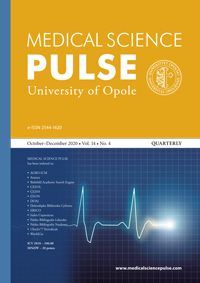Interpretation of ECG recordings: part 1.
Interpretation of ECG recordings: part 1.
Author(s): Michał Szurgot, Weronika Wieczorek, Beniamin Oskar GrabarekSubject(s): Health and medicine and law
Published by: Uniwersytet Opolski
Keywords: electrocardiogram; interpretation; lead; complex; wave
Summary/Abstract: Background: Despite having an academic background in the medical sciences, including students in the field, many encounter issues in evaluating electrocardiogram (also known as electrocardiograph or ECG) recordings to make appropriate diagnoses. The prevalent idea among most students currently is that ECG recordings are difficult to comprehend and even more difficult to interpret. Unfortunately, it is still possible today to come across a doctor (that is not a cardiologist) who cannot correctly evaluate an ECG, despite being frequently used as a diagnostic indicator of serious health conditions. Evaluation of an ECG recording is a key cardiac assessment that is safe, inexpensive, simple, and quick to complete. Some of the many reasons that require an ECG include: health problems that are cardiologic or related to other internal organs, evaluation of the risk of cardiovascular diseases, exclusion of potential pathological changes associated with age, and goals of disease prevention. Evaluation of the test is made difficult due to a lack of understanding of the functional mechanisms of an ECG as well as how to use it properly, which can distort the interpretation of the test. Aim of the study: This article aims to explain the basic mechanisms of how an ECG functions, the proper method of conducting the test, and will review the basics of interpreting recordings. Material and methods: The hope is that the knowledge and information presented here will assist in laying a foundation for better understanding disease mechanisms detected using ECG imaging, and help students current and future students effectively learn about the test. Results: This work is a proof of concept with simulations that appropriately reflect the physiological functioning of the heart that are evaluated by ECG recordings. Conclusions: This should make it easier for students to understand the basics of conducting and interpreting ECG tests.
Journal: Medical Science Pulse
- Issue Year: 15/2021
- Issue No: 1
- Page Range: 55-61
- Page Count: 7
- Language: English

